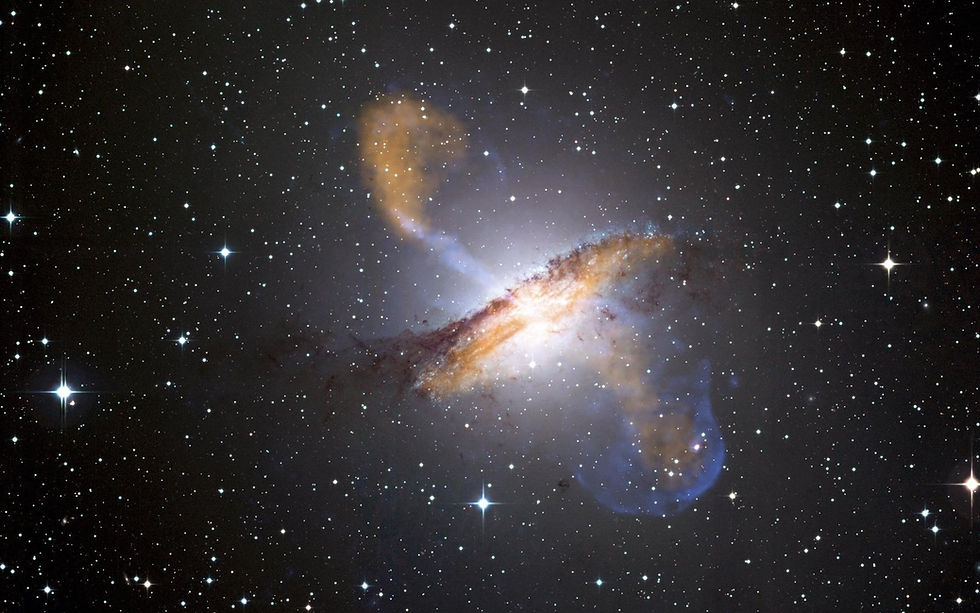Betelgeuse: An In-Depth Investigation into the Behemoth Star's Evolution and Potential
- Dhruv Hegde
- Aug 5, 2023
- 3 min read
Author: Afreen Hossain - Astronomy Cohort - August 5th, 2023

Photo by Designecologist
In the vast cosmic tapestry of stars, betelgeuse stands out as one of the most intriguing and captivating objects in the night sky. This mammoth red supergiant located in the Orion constellation has fascinated astronomers and stargazers alike for centuries with its enormous size, distinct red colour, and the potential for a spectacular supernova explosion. Betelgeuse has earned its place as one of the most prominent stars in our universe. In this article, we will explore the characteristics, lifecycle, and significance of betelgeuse, shedding light on its captivating nature.
Discovery and Observation:
Betelgeuse, also known as Alpha Orionis, was first recorded by ancient civilizations, including the Babylonians and Chinese astronomers. Its name is derived from the Arabic phrase “Yad Al-Jawzz” which means the “hand of orion” .The star’s prominent position as part of the orion constellation has made it a well-known celestial landmark across various cultures throughout history.
Physical Characteristics:
Betelgeuse's most striking feature is its immense size as a red supergiant. It is one of the largest known stars in the Milky Way galaxy. Its radius is believed to be about 1000 times that of our sun, making it large enough to engulf the inner planets Mercury, Venus, Earth, and Mars if placed in our solar system. The star's red hue visible to the naked eye arises from its low surface temperature compared to other stars, with a temperature of approximately 3500 to 3600 kelvin. Belgeuse emits most of its radiation in the infrared part of the electromagnetic spectrum, contributing to its distinctive color. Betelgeuse's brightness, like many stars, varies over time. It is classified as a variable star and undergoes periodic changes in luminosity. The cause of these variations remains an active area of research for astronomers.
Lifecycle and Evolution:
Betelgeuse's life cycle has been shaped by its mass, which is believed to be around 10 to 20 times that of the sun. It began as a massive main-sequence star fusing hydrogen into helium in its core as it exhausted its hydrogen fuel. Gravitational forces led to its expansion into a red supergiant phase. Red supergiants are late-stage stars that have exhausted their core hydrogen and expanded to many times their original size. Betelgeuse's outer envelope has swelled, leading to its bloated appearance, and it is currently in a phase known as core helium burning. In this phase, helium nuclei fuse to form heavier elements like carbon and oxygen.
Video by Pixabay
Supernova Potential:
One of the most intriguing aspects of betelgeuse is its potential to go supernova. As a red supergiant, betelgeuse is at the end of its life, and when its core can no longer support nuclear fusion, it will ultimately collapse under its gravity. This collapse could trigger a supernova explosion, marking the end of betelgeuse's life in a spectacular and awe-inspiring event. The exact timing of betelgeuse's supernova remains uncertain. It could occur within the next few thousand years, or it might happen much sooner or later. Betelgeuse's explosion will be visible from earth even during the day and will likely outshine the full moon for a short period. Astronomers eagerly await this event as it will provide invaluable insights into the late stages of massive star evolution.
Scientific Significance:
Betelgeuse's unique position as a nearby and massive star makes it an essential object of study for astronomers. Its relative proximity, located about 640 light-years away, allows scientists to gather detailed observations and data about its properties. Astronomers use betelgeuse to understand the behaviour and fate of massive stars. the processes of stellar evolution and the distribution of elements in the universe.
Interstellar Navigation:
Betelgeuse's prominence and association with the Orion constellation have also made it an important navigational reference for centuries. Sailors and explorers once relied on stars like betelgeuse to navigate the seas and traverse uncharted territories, though modern navigation methods have mostly replaced these ancient practices. Betelgeuse's historical significance remains an integral part of human history and exploration.
References:
.png)






Comments